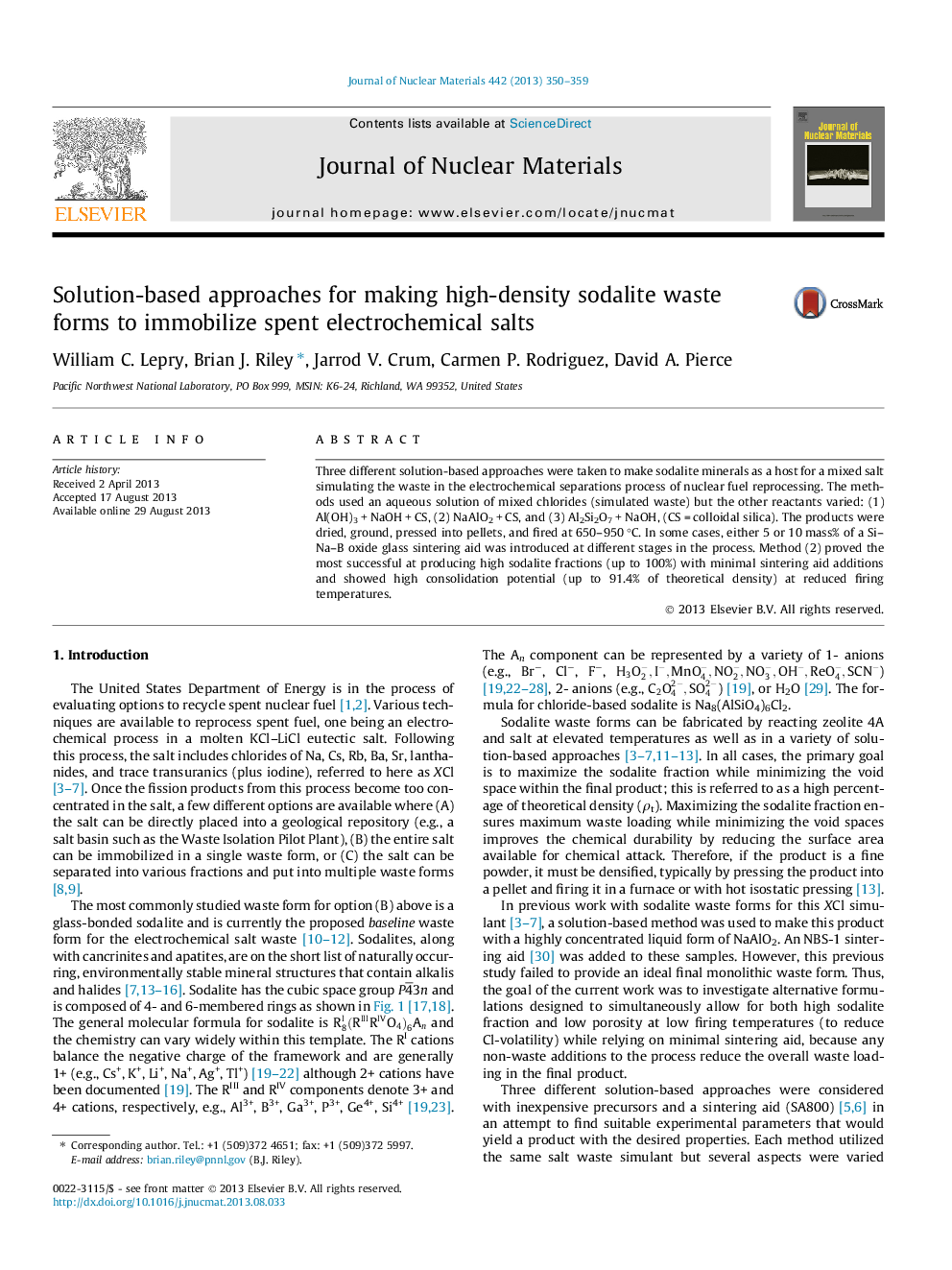| Article ID | Journal | Published Year | Pages | File Type |
|---|---|---|---|---|
| 1565386 | Journal of Nuclear Materials | 2013 | 10 Pages |
Abstract
Three different solution-based approaches were taken to make sodalite minerals as a host for a mixed salt simulating the waste in the electrochemical separations process of nuclear fuel reprocessing. The methods used an aqueous solution of mixed chlorides (simulated waste) but the other reactants varied: (1) Al(OH)3 + NaOH + CS, (2) NaAlO2 + CS, and (3) Al2Si2O7 + NaOH, (CS = colloidal silica). The products were dried, ground, pressed into pellets, and fired at 650-950 °C. In some cases, either 5 or 10 mass% of a Si-Na-B oxide glass sintering aid was introduced at different stages in the process. Method (2) proved the most successful at producing high sodalite fractions (up to 100%) with minimal sintering aid additions and showed high consolidation potential (up to 91.4% of theoretical density) at reduced firing temperatures.
Related Topics
Physical Sciences and Engineering
Energy
Nuclear Energy and Engineering
Authors
William C. Lepry, Brian J. Riley, Jarrod V. Crum, Carmen P. Rodriguez, David A. Pierce,
